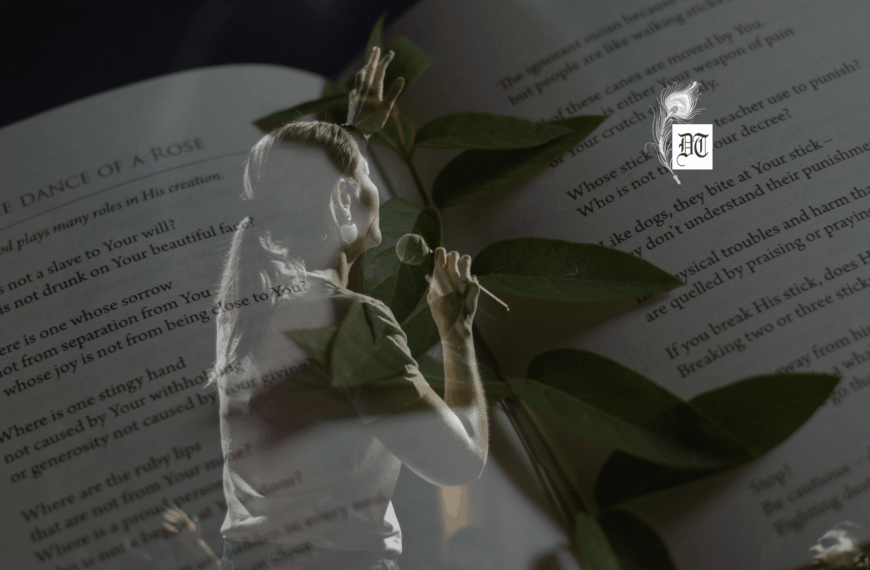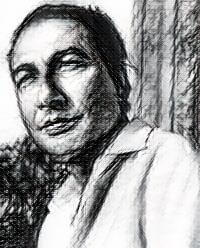Basudeb talks about lesser known women novelists in post-Independent India. He tells us about Shakuntala Shrinagesh, Santa Rama Rau, Vimala Raina, and Muriel Washi, in the weekly column, exclusively in Different Truths.
Under the Banyan tree, other trees cannot grow. The stalwarts like Raja Rao, Mulk Raj Anand, R.K.Narayan, and Khushwant Singh, Chaman Nahal, Bhabani Bhattacharya, later on, Kamala Markandaya, Jhabvala, Anita Desai and others reigned in the domain of Indian novels in English before and after the Indian Independence. Some woman novelists after 1947 entered into novel writings in English. Shakuntala Shrinagesh, Santa Rama Rau, and Vimala Raina – these three novelists deserve special mention. Like those great novelists, these three eclipsed woman novelists responded to the contemporary social, political and economic scenario of their environments.
Shakuntala Shrinagesh published her novel, The Little Black Box, in 1955. This book is in the form of a diary and the female protagonist of the novel is the narrator. The novelist faithfully delineated the indescribable sufferings of a woman in a family. But the novelist was not strong enough to revolt against the injustice.
A close reading of this novel reveals that the central character Sarla suffers in writhing pain. But she has no power to make any resistance against all those social and domestic atrocities if at all they are. Her tolerance leading ultimately to the obsession with her own suffering results in morbidity which is a glaring feature of this novel.
Sarla in The Little Black Box is a naïve, inexperienced, maybe, an abnormal young woman. She is tortured by the members of her family. Always she suffers a sense of being persecuted by her family. She leaves her house silently and without anybody’s notice. She becomes ill and has to spend a couple of months in one hospital. Her physical illness deepens her mental sickness. She seems to be obsessed by her “little black box” that is full of all her wealth. When she is confirmed of her death, she becomes almost insane, for, to whom she will hand over her box containing her wealth.
Shakuntala depicts a terrible state of Sarla’s state of mind She cannot even believe her brother. It is a type of behaviour of a neurotic patient. Her fancy leads her to believe that her brother’s daughter Nimmi whom she thinks that she is an emblem of innocence and honesty. The novel can be described a novel of morbidity and bitterness. With the cooperation of doctors, nurses, she finally makes recovery of her health. As Nimmi has no link with her in the past, she welcomes her and helps her a lot always encouraging her to stand on her own feet. While reading this novel, The Little Black Box, one may find some similarities with Charlotte Bronte’s Jane Eyre.
 Santa Rama Rau was a prolific writer. She wrote a good number of travelogues. These are Home to India, East of Home, My Russian Journey, Gifts of Passages, etc. She was born to a family in January 1923. All members including her mother’s side held very high administrative positions in India after the partition of India. Her father was an ICS and became the Governor of Reserve Bank of India (1949-1957). Before this assignment, he was the first Indian Ambassador in Japan. Her uncle was a journalist of national as well as international repute. He also became the member of the Indian Parliament. She was educated at St. Paul’s Girl’s School in England. And she was the first Indian graduate with Honours from Wellesley College, Massachusetts, in 1944. Santa also wrote a theatre script of E. M. Forster’s A Passage to India, with Forster’s permission. She passed away in April 2009 (aged about 86).
Santa Rama Rau was a prolific writer. She wrote a good number of travelogues. These are Home to India, East of Home, My Russian Journey, Gifts of Passages, etc. She was born to a family in January 1923. All members including her mother’s side held very high administrative positions in India after the partition of India. Her father was an ICS and became the Governor of Reserve Bank of India (1949-1957). Before this assignment, he was the first Indian Ambassador in Japan. Her uncle was a journalist of national as well as international repute. He also became the member of the Indian Parliament. She was educated at St. Paul’s Girl’s School in England. And she was the first Indian graduate with Honours from Wellesley College, Massachusetts, in 1944. Santa also wrote a theatre script of E. M. Forster’s A Passage to India, with Forster’s permission. She passed away in April 2009 (aged about 86).
She wrote only one novel, Remember the House, which was published sometime in 1956. The novel is replete with the experiences, which she gathered from the environment of her own house and the elitist society she belonged to. In this novel, she recalls her early childhood and adolescence at Jalnabad. The narration of her early life is very sensitive. There is hardly any element of sentimentality. In her novel what we find is her attempt to bring about a kind of blending between the East and the West.
K.R. Srinivasa Iyengar comments on her novel thus, “Santa Rama Rau’s writing has an ease and urbanity appropriate to the theme, and she explores and exposes ever so gently the dividing gulf between the East and the West”. It is her education, her marriage with her first husband, American Faubion Bowers, her extensive travel in different countries in Asia, Africa and Russia and above all her grooming in an elitist environment of her distinguished paternal family, all these combined together makes her writer of a novel, travelogues and the running and editing of a magazine. One of its evidence is her command and felicity as well as the sophistication of her English language.
Ambapali, published in 1962, written by Vimala Raina, is a bold attempt in the history of Indian woman novelists in English. The novel is set in Vaishali, one of the ancient Indian cities and in the background of Buddhism. This is a historical novel. The characters in Vimala Raina’s novel, Ambapali are historical but the fact is that episodes connected with the life of “Amrapali” have been changed through addition, alteration, omission, exaggeration, etc, by the novelist. A novelist when (s)he writes a historical novel usually enjoys this right. Had it not been, it would be a book of history. A historical novelist is also in need of fictionalising the facts of history.
‘Ambapali’ is also popularly called ‘Amrapali’ or ‘Ambapalika’ in the history of Lord Buddha’s life.  Ambapali was born under on mango tree by the cause of the divine. So she is called Ambapali. She was a dancer who had the power to mesmerise the viewers. She was a celebrity. And in the ancient days, according to the royal system, she was Nagarvadhu, meaning royal courtesan. Ambapali represented the enlightened prostitution. She met Lord Buddha when Lord Buddha came last to Vaishali and Lord Buddha was also charmed by her dazzling and captivating beauty of Ambapali. He told his disciples to be very much aware of Ambapali. Afterwards, Ambapali mind was changed and she offered all her properties including her splendid residence. She finally wanted her deliverance in renunciation. In short, this is what we find about Ambapali in a book of history.
Ambapali was born under on mango tree by the cause of the divine. So she is called Ambapali. She was a dancer who had the power to mesmerise the viewers. She was a celebrity. And in the ancient days, according to the royal system, she was Nagarvadhu, meaning royal courtesan. Ambapali represented the enlightened prostitution. She met Lord Buddha when Lord Buddha came last to Vaishali and Lord Buddha was also charmed by her dazzling and captivating beauty of Ambapali. He told his disciples to be very much aware of Ambapali. Afterwards, Ambapali mind was changed and she offered all her properties including her splendid residence. She finally wanted her deliverance in renunciation. In short, this is what we find about Ambapali in a book of history.
Vimala Raina was very much fascinated by this historical character and decided to write a novel on the life of Ambapali. In the introduction of her novel, Ambapali, she with no ambiguity confessed that the ancient Ambapali is the symbol of the glorious past of our country. “The main story is moving enough. Although surrounded by wealthy admirers, Ambapali gives her heart to the disguised Ajat Shatru, not realising that he is her Vaishali’s enemy. Years later, King Ajat Shatru subjugates Vaishali and comes to claim her. But already she has been accepted by the Buddha, and she has nothing but scorn for the lover, who had won her under false pretence and become country’s scourge” (K.R. Srinivasa Iyengar, p.475). The climax of Raina’s novel is very much heart piercing. Ambapali is now a devotee of Lord Buddha and a Buddhist nun and with no hesitation, she flings her into endless shame, ‘despair’ and ‘darkness’.
This move of Ambapali also benefits Ajat Shatru. In his love for Ambapali, she feels what sensual love is. After Ambapali scorns him, Ajat Shatru starts realising the infinite beyond his physical attraction for Ambapali. He now understands that human life is not lustful; it is a meaningful compassion; it has its own meaning. This treatment of Ambapali helps Ajat Shatru transcend from the mundane to the spiritual. Here lies Ajat Shatru’s benefit. Vimala Raina has emotionally given a ‘Humane touch’ to this part of her novel. And the culmination of the relationship between Ajat Shatru and Ambapali, thus, is very convincing to readers. The relationship between Ajat Shatru and Ambapali is at the end of the novel is aesthetically gratifying though there are many extraneous episodes, which the novelist could have easily avoided.
One more novelist who wrote a novel, Too High for Rivalry (1967) remains almost unsung to us even today. And she is Muriel Washi. Too High Rivalry is, in fact, a full- fledged campus novel. R. K. Narayan’s The Bachelor of Arts has often been referred as a campus novel because the novel delineates faithfully the events taking place in the higher education campus. Wasi’s novel focuses on the search of an excellent Headmistress of St. Hilary’s. This is a school in Delhi. Amita Choudhury is close to sixty and intends to retire from the active service. Moreover, she feels that her health does not permit her to continue the job. But she is very much worried about the future of the school. She wants that the tradition of the school, which she has continued should be carried over even after her retirement. The new headmistress should be competent enough to do that job. The Governing Body of the school has shortlisted some names for the appointment of St. Hilary’s. Finally, Malti Krishnan has been appointed. Malti Krishnan is wise and sensible. She is capable of taking appropriate judgment at an appropriate point in time. She is poised and well-determined. The novel is readable. And Malti’s insight is praiseworthy.
There are several woman novelists during this long period of time before and after the Indian Independence. Most of them could not stand the test of time.
©Basudeb Chakraborti
Photos from the internet.
#MakingOfLiterature #LesserKnownNovelist #PostIndependenceNovelist #WomenNovelist #ShakuntalaShrinagesh #SantaRamaRau #VimalaRaina #MurielWashi #DifferentTruths





 By
By
 By
By
